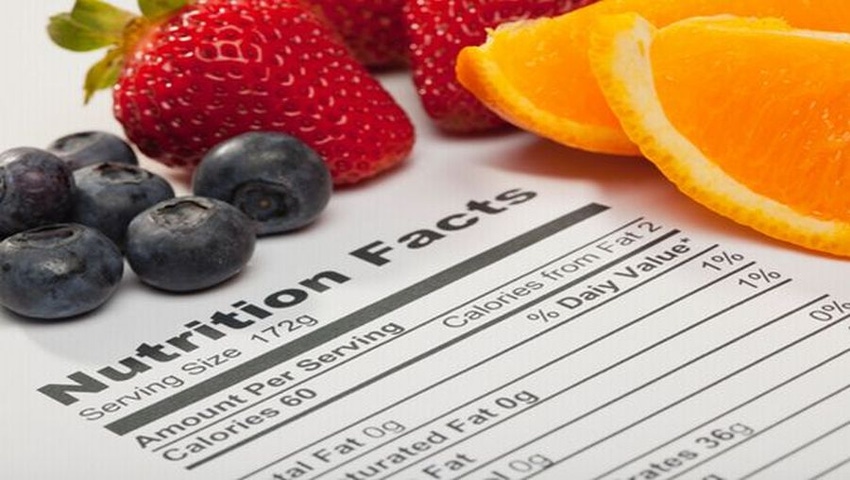FDA today finalized the new Nutrition Facts label for packaged foods to reflect new scientific information, including the link between diet and chronic diseases such as obesity and heart disease. The sweeping overhaul—the first in 20 years—includes modifying the list of required nutrients that must be declared on the label, updating serving size requirements, and providing a refreshed design.

FDA today finalized the new Nutrition Facts label for packaged foods to reflect new scientific information, including the link between diet and chronic diseases such as obesity and heart disease. The sweeping overhaul—the first in 20 years—includes modifying the list of required nutrients that must be declared on the label, updating serving size requirements, and providing a refreshed design.
In March 2014, FDA proposed two rules to update the label, and in July 2015, issued a supplemental proposed rule. The Nutrition Facts label regulations apply to packaged foods except certain meat, poultry and processed egg products, which are regulated by USDA’s Food Safety and Inspection Service (FSIS).
Most food manufacturers will be required to use the new label by July 26, 2018; however, manufacturers with less than $10 million in annual food sales will have an additional year to comply with the new rules. Foods imported to the United States also will need to meet the final requirements. Click here for a side-by-side comparison of the original label and the updated version.
“For more than 20 years, Americans have relied on the Nutrition Facts Label as a leading source of information regarding calories, fat and other nutrients to help them understand more about the foods they eat in a day," said FDA Commissioner Robert Califf, M.D. “The updated label makes improvements to this valuable resource so consumers can make more informed food choices—one of the most important steps a person can take to reduce the risk of heart disease and obesity."
In 2014, FDA Deputy Commissioner Michael Taylor estimated the cost to industry at around $2 billion, although he said the regulations are projected to yield $20 billion to $30 billion in economic benefits. FDA estimated the sweeping proposal would impact roughly 60,000 manufacturers and more than 700,000 Universal Product Codes, representing approximately $236.78 billion in sales in grocery stores, drug stores and mass merchandise stores.
The new Nutrition Facts label will include:
An updated design to highlight “calories" and “servings," two important elements in making informed food choices.
Requirements for serving sizes that more closely reflect the amounts of food that people currently eat. What and how much people eat and drink has changed since the last serving size requirements were published in 1993. By law, the Nutrition Labeling and Education Act requires that serving sizes be based on what people actually eat.
Declaration of grams and a percent daily value (%DV) for “added sugars" to help consumers know how much sugar has been added to the product. It is difficult to meet nutrient needs while staying within calorie limits if you consume more than 10 percent of your total daily calories from added sugars, and this is consistent with the scientific evidence supporting the 2015-2020 Dietary Guidelines for Americans.
“Dual column" labels to indicate both “per serving" and “per package" calorie and nutrition information for certain multi-serving food products that could be consumed in one sitting or multiple sittings. Examples include a pint of ice cream and a 3-ounce bag of chips. With dual-column labels available, consumers will be able to easily understand how many calories and nutrients they are getting if they eat or drink the entire package/unit at one time.
For packages between 1 and 2 servings, such as a 20-ounce soda, the calories and other nutrients will be required to be labeled as 1 serving because people typically consume it in one sitting.
Updated daily values for nutrients like sodium, dietary fiber and vitamin D, consistent with Institute of Medicine recommendations and the 2015-2020 Dietary Guidelines for Americans. Daily values are reference amounts of nutrients to consume or not to exceed and are used to calculate the %DV that manufacturers include on the label.
Declaration of vitamin D and potassium that will include the actual gram amount, in addition to the %DV. These are nutrients that some people are not getting enough of, which puts them at higher risk for chronic disease. The %DV for calcium and iron will continue to be required, along with the actual gram amount. Vitamins A and C will no longer be required because deficiencies of these vitamins are rare, but these nutrients can be included on a voluntary basis.
“Calories from Fat" will be removed because research shows the type of fat is more important than the amount. “Total Fat," “Saturated Fat" and “Trans Fat" will continue to be required.
An abbreviated footnote to better explain the %DV.
FDA also is making minor changes to the Supplement Facts label found on dietary supplements to make it consistent with the Nutrition Facts label.
One of the most-anticipated change is the inclusion of added sugar on the Nutrition Facts label. The final rule requires “Includes X g Added Sugars" to be included under “Total Sugars" to help consumers understand how much sugar has been added to the product. FDA’s decision to include added sugars is based on recommendations from experts that Americans should lower their calorie intake from such food.
On average, Americans get about 13 percent of their total calories from added sugars, with the major sources being sugar-sweetened beverages (including soft drinks, fruit drinks, coffee and tea, sport and energy drinks and alcoholic beverages) and snacks and sweets (including grain-based desserts, dairy desserts, candies, sugars, jams, syrups and sweet toppings).
About the Author(s)
You May Also Like






.png?width=800&auto=webp&quality=80&disable=upscale)